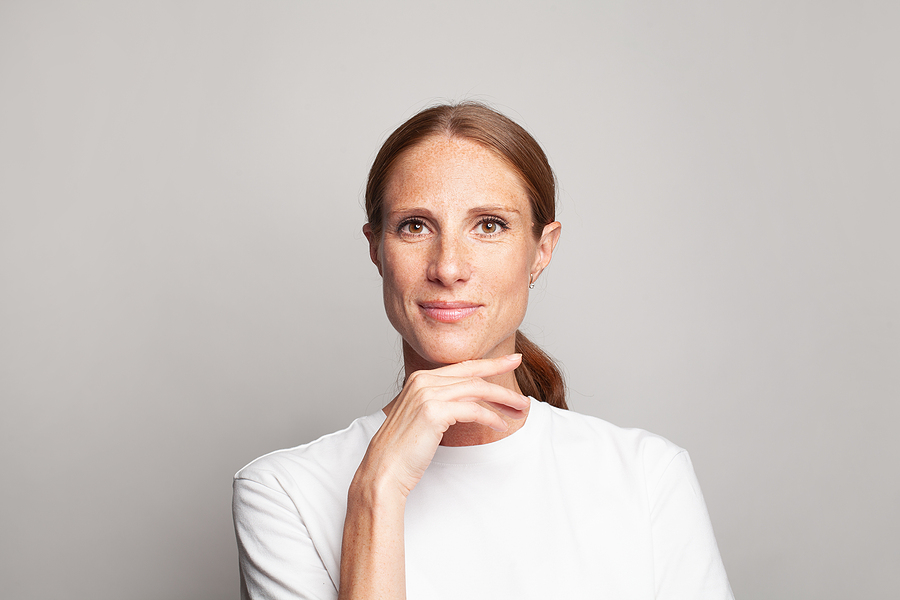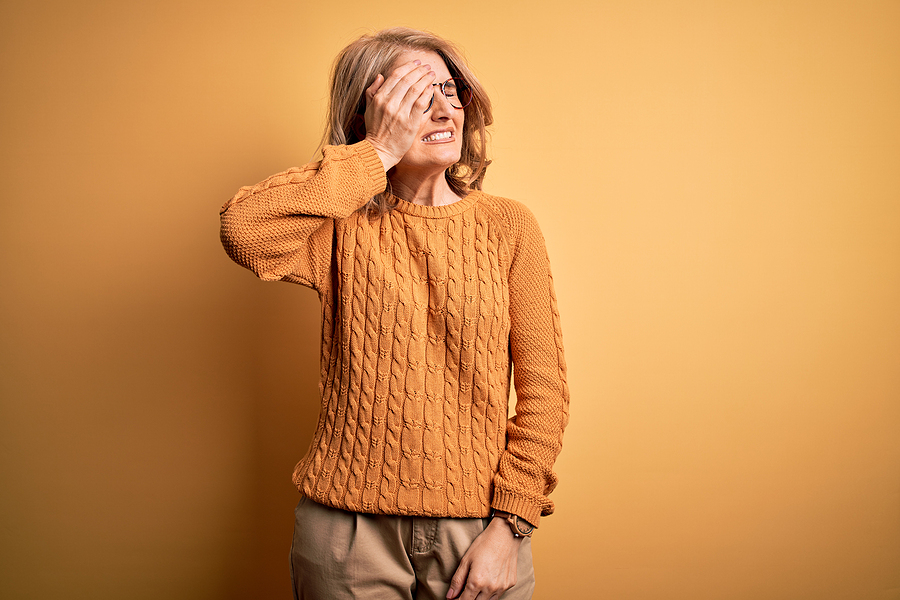Updated 11/17/19
You know that feeling of confidence that radiates from within when you’re having a great hair day, your skin is clear and bright, or you just feel especially beautiful? I am a firm believer in the connection between inner well-being and outer beauty. I think they go hand in hand. It’s hard to feel great when you are uncomfortable with the way you look– and it’s hard to look great when you’re uncomfortable with the way you feel! I hear reiterations of this concern from my patients, many of whom are struggling with hormonal imbalances or adrenal fatigue, absolutely all the time.
My approach to every concern my patients share with me is to get to the root cause of the symptoms and treat them, rather than just covering them up. To look and feel great, you need to be physically symptom-free so that your hair, skin and body can radiate good health. And a healthy mood and emotional state are important as well.
I work with my patients to resolve and clear the emotional and mood-based symptoms of hormonal balance as well as the physical ones. I also believe it’s important to remove emotional blocks and barriers and resolve any buried emotions; they may be hidden but often surface during menstruation or menopause as a gift from our body to us to heal them.
I know firsthand that women can restore their inner and outer beauty with good nutrition and lifestyle choices, and some transitional supplementation support. The products available in my store have helped thousands of women to do just that and I’ve witnessed many extraordinary transformations. Getting there, however, is a process that takes a little time and support.
During that time, many of my patients turn to cosmetics and beauty products to help them look and feel better.
Unfortunately, the beauty industry is largely unregulated, and many of the ingredients used in these products contain chemicals that can disrupt your hormones even further, make things worse, and contribute to a number of health problems over time, including metabolic syndrome and even cancer.
That’s a high price to pay! But there are other options. Knowledge is power, so let’s take a closer look at what you need to know about chemicals in cosmetics, and how we can make better choices when it comes to what we put on our skin and in our bodies.
Women Are Exposed to 168 Chemicals A Day
What?! Whenever I mention this statistic to people, that’s the reaction I get. Most of us are aware that we’re living in a world full of chemicals, but 168 different chemicals every single day? It really is a shocking and outrageous number.
It was a study by the Environmental Working Group (EWG) that revealed the extent of the problem. Women use, on average, 12 different personal care or cosmetic products a day– and together, those products contain as many as 168 different chemicals.
Chemicals in personal care and cosmetic products may be in low doses, but this is of little comfort. Studies have shown that ongoing, low-dose exposure and the cumulative effect it has over time can be as damaging or even more damaging than a single, large dose exposure.
And we’re talking about 168 different chemicals here: how they all interact with each other within our bodies has not been studied. This is one of the biggest problems with research into chemicals and toxins. Chemicals and their effects are generally studied in isolation, which is not consistent with the way we interact with them in real life. The majority of us are dealing with the cumulative effects of a lifetime of being exposed to our 168 personal care product chemicals in various different combinations, combined with a sea of other toxins, pathogens, inflammatory foods, stress… all of which are influencing our hormones and our bodies in more ways than we can count.
We also hear about “safe levels” of certain chemicals or toxic metals (for example, the amounts of aluminum– a neurotoxin and carcinogen– that are found in just about all lipsticks, are within the “safe” threshold). But again, this does not take into consideration the cumulative effect of multiple chemicals and toxins, and how they interact.
An even more concerning fact from the EWG study is that teenagers use an average of 17 products a day, putting the potential exposure on their developing minds and bodies at over 200 different chemicals.
If you’re wondering about your man, men use fewer products, but still get exposure to about 85 chemicals a day. Given that this exposure occurs over a lifetime, this is a cause for concern.
We are now more focused on eating better foods and choosing organic, but the truth is that applying chemicals to skin enhances the likelihood of absorption into the blood: what we put on our bodies might matter even more than what we are eating. (Just rub a piece of garlic on the bottom of your foot and see how long it takes until you taste garlic in your mouth!)
In fact, when EWG looked at the presence of chemicals inside the bodies of teenagers, they found 16 different hormone-altering chemicals, including phthalates and parabens. Just what a teenager needs: more hormone disruption!
Lack of Regulation
When most people hear the statistics about how many harmful chemicals are really in our beauty and personal care products, they wonder how this has been allowed to happen.
In fact, polling shows that two thirds of consumers are under the impression that chemicals in cosmetics are reviewed by the FDA– but this is not really the case.
This is a huge problem in the US! There is very little regulation of beauty and personal care products. Unlike in Europe where over a thousand ingredients have been banned from personal care products, in the U.S., the FDA only prohibits nine chemicals/chemical groups from use in products.
Instead, the industry is self-regulated by a review board, which in its 30+ year history has only restricted 9 items from use, and even then, its decisions are not binding.
In addition, there are little to no labeling requirements for cosmetics and personal care products. Companies can go ahead and use the terms “natural”, “hypoallergenic”, and even “organic” with little regulation or oversight. In fact, “organic” personal care products may contain as little as 10% organic ingredients, and may still contain harmful petrochemicals even though they claim to be organic.
I’ve known for some time that these chemicals can disrupt our body’s natural processes and interfere with our hormones, causing or contributing to a number of health concerns. At my practice, I see the impact they can have on women’s menstrual cycles, including more severe PMS and menopausal symptoms. And a 2015 study concluded that exposure to beauty products can actually trigger early menopause.
Chemicals in Cosmetics: Exposure Can Lead to Early Menopause (and Early Puberty)
One of the most comprehensive studies ever done on menopause and endocrine disruptors shows that exposure to chemicals such as dioxins from pesticides, phthalates from fragrances, plastics, cosmetics and hairspray, and polychlorinated biphenyls can result in menopause as many as four years earlier than it would otherwise have arrived.
The study took blood and urine samples from women over a ten-year period and analyzed them for chemicals such as pesticides and other endocrine disruptors. They also asked the women questions about their health, nutrition, and menopausal status every two years. In total, the researchers found 111 chemicals present in their blood and urine and they showed that the women with the highest levels of the chemicals entered menopause on average between 2 and 4 years earlier than the women who had lower levels.
The study concluded that it wasn’t simply exposure to the chemicals that triggered the body’s response– it was the increasing exposure over time that led to the impaired ovarian function. When they looked at all women over 30, those with the highest levels of exposure in their blood and urine were 6 times more likely to be menopausal than the women with lower exposure levels.
While more studies will be needed before we can conclude with certainty that one causes the other, the link between the two has now been proven. Previous studies had already linked endocrine disruptors to disturbances and imbalances in reproductive hormones such as estrogen, so following that disruption through to its next logical impact, early menopause, makes sense.
I’ve said in the past that I suspected we would eventually see a verification of a comparable impact on the age that young girls reach puberty. A 2018 study has demonstrated just that. Chemicals commonly found in personal care and household products, including phthalates, parabens, and phenols, have been linked to earlier puberty in girls. The study found associations between earlier puberty and both higher levels of chemicals during the mother’s pregnancy, and higher levels of parabens in 9 year old girls.
Anything that interferes with our regular hormonal function is important to look at, and earlier puberty has been linked to concerns like increased risk of mental health conditions and increased risk of breast and ovarian cancers later in life.
Reducing Exposure
Exposure to some of the chemicals that are allowed in our cosmetic products can lead to hormonal disruption, neurological dysfunction, and certain kinds of cancer. Prenatal exposure may also lead to developmental delays.
One of the most concerning things about chemical exposure in general is that it is very difficult for women to reduce their exposure to all of these toxins. Many environmental chemicals have half-lives that take decades for them to break down; even if they have been banned in the US in the 1970’s as PCB’s were, they remain in the air, soil and water. In addition, several of these substances are still in use in other countries and make their way into our air and food supply.
But many of them are well within our control. There are things that we all can – and should – do to reduce our exposure, including going “green” in our household products and choosing organic in our food and beauty product purchases (being careful to read the labels!).
Given that it is the exposure over time that adds up and makes a difference, every little choice that we can make to avoid adding to our toxic load may be one that keeps our hormones and our bodies functioning optimally over time.
Quick Tips for Avoiding Exposure
Here are a few ways to avoid chemical exposure in your daily life:
- Avoid plastics, especially in food packaging
- Minimize microwaving and only do so in glass containers
- Avoid handling cash register receipts
- Choose organic health and beauty cosmetics and products that don’t contain pesticides and other chemicals. There are some great ones out there but you’ll have to read the labels. Especially try to avoid “fragrance” or “parfum” which contains phthalates, and look to avoid parabens. The Environmental Working Group has an awesome list that can guide you.
- Remember that personal care products include everything from makeup and perfumes to soap, shampoo, and deodorant. Choose carefully in all categories!
- Try using natural remedies and products. Coconut oil is a great moisturizer for skin, nails, lips and hair.
- Eat organic fruits and vegetables, grass-fed meat and wild caught fish. Minimize packaged, processed foods.
- Take a high quality multivitamin to keep your body and your immune system strong.
- We now know that digestive microbes impact our overall health so I recommend that every woman take a probiotic supplement as well. You can learn more about probiotics in my article here.
There are a lot more things that we can do. I’ve been talking about the harms of exposure to these products for decades. I have much more information on endocrine disruptors to share with you in my health library.
To learn more about my hormonal balance support products and nutritional supplementation in order to minimize the impact of chemical exposures, click here.








